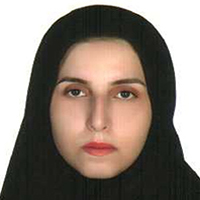Comparison of essential oil compounds in Matricaria chamomilla L. wild populations with their cultivated equivalents
Author(s):
Article Type:
Research/Original Article (دارای رتبه معتبر)
Abstract:
Background and objectives
Chamomile (Matricaria chamomilla L.) is a valuable medicinal plant with many applications in the food, pharmaceutical, and cosmetic health industries. Chamomile's biological properties are attributed to its essential oil (EO) compounds, especially chamazulene and a-bisabolol oxide A, and flavonoids, esp. apigenin and luteolin. Evaluation of wild plant populations belonging to different geographical regions in situ (study on wild samples) and ex-situ (study on wild samples under agricultural conditions) is a crucial step in plant breeding and selection of promising genotypes. On the other hand, cultivation and domestication of wild plants under agricultural conditions improve plant yield and prevent unnecessary harvesting and extinction of the plant. In the present study, the quantitative and qualitative EO diversity of some wild chamomile was investigated.Methodology
Flowers and seeds of 15 wild chamomile populations were collected from Iran's natural habitats, including 12 populations from Khuzistan province (Kh1-12), 2 populations from Fars province (F1-2), and 1 population from Bushehr province (F3) in 2021 (February-May). Flowers were used for essential oil extraction, and seeds were planted in a randomized complete block design (treatment = genotype) with three replications. The research farm located at Alborz Research Station, affiliated with the Research Institute of Forests and Rangelands, Alborz province, was considered a cultivation site without adding fertilizer to the soil. The seeds were sown directly in the field with a 15 cm distance between the planting lines and 15 cm between the plants on the lines (April 2021). Drip irrigation was used, and weeding was done mechanically. Flowers with less than 5 cm of peduncles were harvested manually at the 70% full bloom stage. The shade-dried flower EOs were extracted by water distillation (Clevenger) for 3 hours, and their quantitative and qualitative analysis was done using GC and GC/MS.Results
The results showed that sesquiterpene hydrocarbons, oxygenated sesquiterpenes, and diacetylenes made the highest EO compounds percentage in both wild and cultivated samples. Chamazulene (from sesquiterpene hydrocarbons) and a-bisabolol oxide A (from oxygenated sesquiterpenes), as two important chamomile EO compounds, showed an increase from wild to cultivated samples. Among the wild samples, the highest chamazulene (5.3%) and a-bisabolol oxide A (21.5%) contents were assigned to the populations Kh8 and Kh4, respectively. In the cultivated samples, the highest amount of these compounds (11.1 and 32.3%, respectively) was obtained in the populations Kh7 and F2, respectively. In general, the main EO compounds (%) in the wild and cultivated populations included α-bisabolone oxide A (wild: 31.3 (F1) to 64.5 (Kh3) and cultivated: 29.8 (F2) to 56 (Kh3)), α-bisabolol oxide A (wild: 5.8 (Kh5) to 21.5 (Kh4) and cultivated: 10.3 (Kh3) to 32.3 (F2)), E-β-farnesene (wild: 6.1 (Kh3) to 23.3 (Kh8) and cultivated: 6.9 (Kh1) to 15.6 (F3)), Z-spiroether (wild: 0 (F1) to 16.1 (Kh1) and cultivated: 9.1 (Kh7) to 15.1 (Kh13)), and chamazulene (wild: 1.6 (F1) to 5.3 (Kh8) and cultivated: 4.7 (Kh6) to 11.1 (Kh7)). Also, the EO% was obtained more in the cultivated samples (0.9 (Kh5) to 1.4% (Kh13)) than in the wild ones (0.1 (Kh6) to 0.5% (Kh10).Conclusion
The results of this research showed that by cultivating wild populations under agricultural conditions and water and crop management, it is possible to have essential oil in the desired quantity and quality compared to wild ones. It should be noted that the results of repeating population cultivation under the same conditions in the following years will be reported in proportion to the data output.Keywords:
Language:
Persian
Published:
Iranian Journal of Medical and Aromatic Plants, Volume:39 Issue: 4, 2023
Pages:
638 to 654
magiran.com/p2661230
دانلود و مطالعه متن این مقاله با یکی از روشهای زیر امکان پذیر است:
اشتراک شخصی
با عضویت و پرداخت آنلاین حق اشتراک یکساله به مبلغ 1,390,000ريال میتوانید 70 عنوان مطلب دانلود کنید!
اشتراک سازمانی
به کتابخانه دانشگاه یا محل کار خود پیشنهاد کنید تا اشتراک سازمانی این پایگاه را برای دسترسی نامحدود همه کاربران به متن مطالب تهیه نمایند!
توجه!
- حق عضویت دریافتی صرف حمایت از نشریات عضو و نگهداری، تکمیل و توسعه مگیران میشود.
- پرداخت حق اشتراک و دانلود مقالات اجازه بازنشر آن در سایر رسانههای چاپی و دیجیتال را به کاربر نمیدهد.
In order to view content subscription is required
Personal subscription
Subscribe magiran.com for 70 € euros via PayPal and download 70 articles during a year.
Organization subscription
Please contact us to subscribe your university or library for unlimited access!


